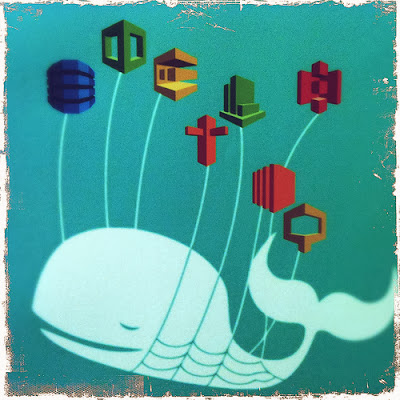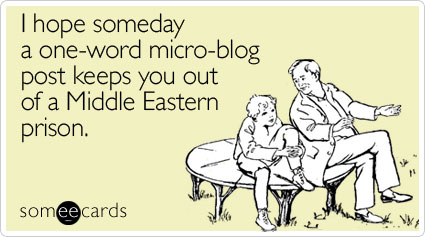
How to Use Social Media at a Trade Show

Alone we can do so little; together we can do so much!

 Recently we marked 100 years since the R.M.S. Titanic sank in the North Atlantic, taking the lives of over 1,500 souls with her in those icy waters. And over the last year or so, the commercial side of the enterprise has been heating up at an amazing pace.
Recently we marked 100 years since the R.M.S. Titanic sank in the North Atlantic, taking the lives of over 1,500 souls with her in those icy waters. And over the last year or so, the commercial side of the enterprise has been heating up at an amazing pace.
The Titanic has always had an allure about it – an amazing feat of engineering that was brought down on its maiden voyage, tales of heroism and chivalry (women and children first), class struggles and unforeseen safety needs. Indeed, it now stands as one of the greatest lessons of all time of man’s hubris in the face of nature, and will forever remind us that we need to plan for the worst possible contingencies despite our confidence in our own technological advances.
 In the last week, we’ve seen major changes from Google+ and Facebook. You can now add Delicious to that mix. You’ll recall that last December, Yahoo! decided to sell Delicious, and then in April, Delicious announced it had been acquired by AVOS.
In the last week, we’ve seen major changes from Google+ and Facebook. You can now add Delicious to that mix. You’ll recall that last December, Yahoo! decided to sell Delicious, and then in April, Delicious announced it had been acquired by AVOS.
And for the following five months, everything seemed to be moving ahead steadily, with no visible change in the interface or service of Delicious.
Until today, that is.
If you head over to Delicious.com, you’ll find that rather than being greeted by a wall of links, tags and descriptions, you’ll be met with a much more visual interface – completely driven by images, as a matter of fact. It’s very reminiscent of Flipboard or other similar iPad apps that rely on a thumbnail and a headline to encourage further exploration.
 “Gamification” seems to be the up and coming buzz word. You may recall that in April, I covered Empire Avenue in a post about the gamification of social media. Now, Google is in the news (literally) with a gamification project of their own, and I think it has some potential.
“Gamification” seems to be the up and coming buzz word. You may recall that in April, I covered Empire Avenue in a post about the gamification of social media. Now, Google is in the news (literally) with a gamification project of their own, and I think it has some potential.
Let’s explore why.
This week Google announced the launch of their Google News Badges. Google heralded the launch with the following description:
The U.S. Edition of Google News now lets you collect private, sharable badges for your favorite topics. The more articles you read on Google News, the more your badges level up: you can reach Bronze, Silver, Gold, Platinum, and finally Ultimate. Keep your badges to yourself, or show them off to your friends.
You’ll probably feel like the badge adoption seems familiar; after all, Foursquare made this a central part of their service.
 We were all probably taught the difference between listening and hearing when we were children. “I hear you,” you say. No doubt you’ve uttered that or had it uttered to you. But is it enough?
We were all probably taught the difference between listening and hearing when we were children. “I hear you,” you say. No doubt you’ve uttered that or had it uttered to you. But is it enough?
We all have a fundamental need to be heard; that implies that we’re acknowledged, certainly. Technically, hearing is simply the process of sound being transmitted and received. Telling someone that you’ve heard them is a good first step, and while that’s an easy way to make a customer feel appreciated by a major brand, there are times when it needs to go beyond hearing and to truly listen: to take to heart what they’ve said and take a harder look at a business practice or service.
 Empire Avenue is the new game in town. It sits squarely in the social networking space, but it has a different twist – one from which I think businesses may be able to gain valuable insights, all while allowing people to enjoy themselves.
Empire Avenue is the new game in town. It sits squarely in the social networking space, but it has a different twist – one from which I think businesses may be able to gain valuable insights, all while allowing people to enjoy themselves.
What is it?
Essentially, it is a rewards system that makes what we already do on the web – create and share content – fun by making it a stock market-like atmosphere. You can earn money (their currency is “Eaves”) by buying other people and you can see your own worth rise by getting other people to invest in you. When tied to other accounts such as Twitter, Facebook, Flickr, YouTube, LinkedIn and blogs, your net worth rises based on the content you either create or share. But like the other sites, it’s also a social network itself. It’s a chance to connect and brainstorm with others by finding affinity groups (“Communities”) within Empire Avenue.
 It’s almost like a rite of spring. Every year, pundits proclaim the death of blogging.
It’s almost like a rite of spring. Every year, pundits proclaim the death of blogging.
As far back as 2007 ReadWriteWeb was asking the question. In 2008, it was Wired, wondering if the rise of Twitter, Facebook, Flickr and the like would be more en vogue for individuals, who were getting pushed aside as the conglomerate professional blogs were beginning to take prominence. In 2009, Copyblogger declared blogging dead (again) but noted that it would continue to live on. Just last year, Problogger debated the role that email played in all of this, and concluded that it’s not an either/or decision.
 Once upon a time, we used to watch TV by appointment. Families gathered together around a tiny screens – screens that were even smaller than our current laptop screens – and share the experience of watching a program together. Even earlier than that, families used to sit around their radios and “watch” their favorite comedies, dramas and adventures.
Once upon a time, we used to watch TV by appointment. Families gathered together around a tiny screens – screens that were even smaller than our current laptop screens – and share the experience of watching a program together. Even earlier than that, families used to sit around their radios and “watch” their favorite comedies, dramas and adventures.
Whether it was the Jack Benny Show on radio or the amazing Thursday night lineup on NBC in the 1990s, for the better part of half a century, we enjoyed entertainment when the broadcasters decided we should. What’s that, you say? You work on Thursday nights? Sorry, but that’s when our show airs.
A little Friday fun. You’d think it would be easier to keep in touch with your contacts these days thanks to the many ways we have to communicate. Phone, email, texting , IM, Twitter @replies and DMs, Facebook messages – and let’s not forget about good old fashioned written notes.
But somehow, we’ve made it more complicated. Everyone has his or her own preference of how they’re predisposed to communicate and be contacted, and it’s a challenge, to say the least, to manage all of these channels and keep a mental Rolodex of preferences. Is there a solution? I don’t know. But Allen Mezquida shared his latest Smigly animation with me, and it captures it well.
Warning: there may be some offensive language in the video
Do you have a solution? Or do you just muddle along like Smigly above?
Scott Monty

Corporate blogging has been with us for quite some time, with some major companies having forayed into the space in the early to mid 2000s. Yet there’s surprisingly little attention paid to it today. Why is that? Is it that the shiny object / GMOOT (“get me one of those!”) syndrome has worn off? Or is it that there’s a purpose that isn’t served by blogs?
“I was misinformed.”
If you look at the recent statistics shared by eMarketer (“Corporate Blogging Goes Mainstream“), you’ll see that only about a third of companies use blogs. But if you look at the growth over the last three years, the use of blogs has actually doubled (!).

The focus on Twitter and Facebook is understandable: they’re nearly universal, they’re easily accessible via mobile devices, and there’s the ability to instantly connect users’ thoughts, actions, and comings and goings via those platforms. But blogging is more than that – or at least has the ability to be more than that.